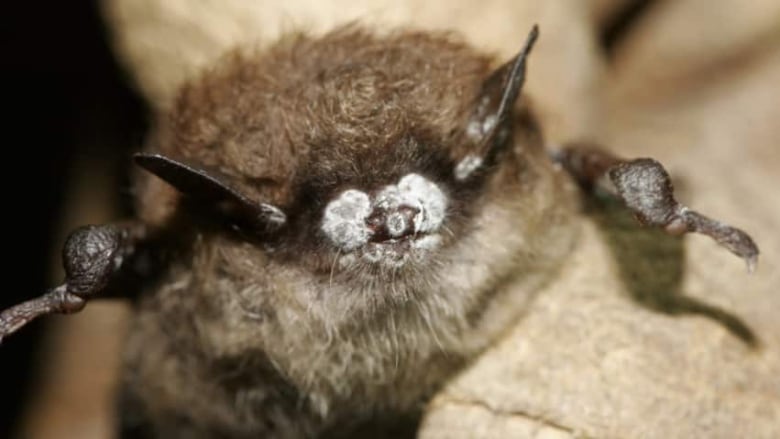Bat sighting hotline hangs up for the year
Cape Breton bucking white-nose syndrome trend, say biologists

The provincial Department of Natural Resources is hanging up its bat hotline for the year and says Nova Scotians made about 1,100 reports of bat sightings since August.
Mark Elderkin, a Department of Natural Resources biologist specializing in species at risk, said the hotline received more than 600 reports in the first two weeks of its existence and the number has nearly doubled since then.
"It's really given us a tremendous snapshot of where bats are and what the state of affairs is across the province," he told Mainstreet's Stephanie Domet.
The bat sighting website and telephone hotline were established by the Mersey Tobeatic Research Institute and the province after a rapid decline in bats because of white-nose syndrome.
White-nose syndrome is a fatal infection caused by a fungus that causes bats to wake frequently during winter hibernation and with limited food available, the bats die from starvation and hypothermia.
The database was set up in August after 95 per cent of the bats at five mainland hibernation sites became infected with white-nose syndrome and died last winter. After that, three bat species were listed as endangered.
Elderkin said most bat populations in the Maritimes had seen a significant outbreak, with the exception of Cape Breton.
"The surprising thing to everybody in the bat conservation community is that Cape Breton has not been in stride with therest of the Maritimes and the Atlantic," he said.
"It seemed that the disease has not yet reached Cape Breton Island and so that's really helped us to better direct our monitoring efforts for this coming winter and to basically align our efforts such that we'll be able to document when and if the disease arrives on the island."












_(720p).jpg)


 OFFICIAL HD MUSIC VIDEO.jpg)
.jpg)



























































































